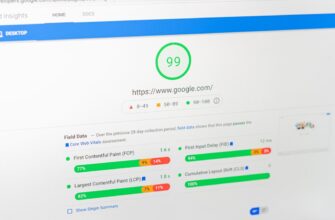- Why Guarding Your Accounts Against Hackers Is Non-Negotiable
- 1. Fortify Passwords with Complexity and Uniqueness
- 2. Mandatory Two-Factor Authentication (2FA)
- 3. Recognize and Neutralize Phishing Attacks
- 4. Deploy a Trusted Password Manager
- 5. Maintain Rigorous Software Hygiene
- 6. Secure Your Email Like a Vault
- 7. Navigate Public Wi-Fi with Extreme Caution
- 8. Monitor Accounts for Suspicious Activity
- 9. Encrypt Connections with HTTPS Everywhere
- 10. Cultivate Ongoing Security Awareness
- Frequently Asked Questions (FAQ)
- What’s the single most effective step to guard accounts?
- How often should I change passwords?
- Are password managers vulnerable to hacking?
- What should I do if an account gets hacked?
- Is biometric security (fingerprint/face ID) safe?
- Can hackers bypass 2FA?
Why Guarding Your Accounts Against Hackers Is Non-Negotiable
In today’s hyper-connected world, your online accounts are gateways to your identity, finances, and privacy. Hackers deploy sophisticated tactics like phishing, credential stuffing, and malware to compromise accounts daily. Implementing robust security practices isn’t just advisable—it’s essential for protecting your digital life. This guide outlines actionable best practices to shield your accounts from unauthorized access.
1. Fortify Passwords with Complexity and Uniqueness
Weak passwords remain hackers’ top exploit. Strengthen yours with these rules:
- Use 12+ characters mixing uppercase, lowercase, numbers, and symbols
- Avoid dictionary words, birthdays, or predictable sequences
- Never reuse passwords across multiple accounts
- Change passwords every 90 days for critical accounts (email, banking)
2. Mandatory Two-Factor Authentication (2FA)
2FA adds a critical security layer beyond passwords. Prioritize these methods:
- Authenticator apps (Google Authenticator, Authy) for time-based codes
- Physical security keys (YubiKey) for phishing-resistant verification
- Avoid SMS-based 2FA when possible—SIM swapping attacks can bypass it
3. Recognize and Neutralize Phishing Attacks
Phishing causes 90% of data breaches. Spot red flags:
- Urgent language demanding immediate action
- Mismatched sender addresses or suspicious URLs
- Requests for passwords or sensitive data via email
- Verify legitimacy by contacting the organization directly—never click embedded links
4. Deploy a Trusted Password Manager
Password managers solve the complexity dilemma:
- Generate and store uncrackable passwords
- Auto-fill credentials securely across devices
- Top options: Bitwarden (open-source), 1Password, or Dashlane
- Always protect your master password with 2FA
5. Maintain Rigorous Software Hygiene
Outdated software invites exploits. Lock down vulnerabilities:
- Enable automatic updates for OS, browsers, and apps
- Remove unused applications and browser extensions
- Install reputable antivirus software with real-time scanning
- Audit app permissions quarterly—revoke unnecessary access
6. Secure Your Email Like a Vault
Email is your digital master key. Protect it with:
- Dedicated password (never reused elsewhere)
- Advanced 2FA like hardware keys
- Encrypted email services (ProtonMail, Tutanota) for sensitive communications
- Disable automatic loading of remote images
7. Navigate Public Wi-Fi with Extreme Caution
Unsecured networks expose your traffic. Stay safe with:
- Avoid accessing financial or email accounts on public Wi-Fi
- Use a premium VPN to encrypt all data transmissions
- Disable file sharing and Bluetooth when not in use
- Verify network names with staff—hackers create fake hotspots
8. Monitor Accounts for Suspicious Activity
Early detection limits damage. Implement:
- Enable login alerts for all critical accounts
- Review account activity logs monthly
- Use credit monitoring services (Credit Karma, IdentityForce)
- Check haveibeenpwned.com for compromised credentials
9. Encrypt Connections with HTTPS Everywhere
Ensure data in transit is protected:
- Install HTTPS Everywhere browser extension
- Never enter data on sites without the padlock icon
- Verify URLs begin with “https://”—not “http://”
- Use DNS-over-HTTPS for encrypted domain resolution
10. Cultivate Ongoing Security Awareness
Human error causes 95% of breaches. Stay vigilant by:
- Subscribing to cybersecurity newsletters (KrebsOnSecurity, The Hacker News)
- Completing annual security training courses
- Verifying requests for sensitive actions via secondary channels
- Assuming unexpected messages are malicious until proven otherwise
Frequently Asked Questions (FAQ)
What’s the single most effective step to guard accounts?
Enabling two-factor authentication (2FA) provides the strongest immediate protection, reducing compromise risk by over 99% according to Microsoft.
How often should I change passwords?
Every 3 months for high-risk accounts (email, banking), and immediately after any service breach. Use your password manager’s breach alert feature for notifications.
Are password managers vulnerable to hacking?
Reputable managers use military-grade encryption (AES-256). Your master password is never stored—only its encrypted derivative. This makes them significantly safer than reusing weak passwords.
What should I do if an account gets hacked?
Immediately: 1) Change password, 2) Enable 2FA, 3) Scan devices for malware, 4) Check connected apps/services, 5) Notify your bank if financial data was exposed.
Is biometric security (fingerprint/face ID) safe?
Biometrics are convenient secondary factors but shouldn’t replace passwords. They’re vulnerable to sophisticated spoofing—always pair with a strong primary password.
Can hackers bypass 2FA?
While difficult, SIM-swapping or malware can intercept SMS codes. Use app-based or hardware 2FA for maximum security. Avoid SMS verification for high-value accounts.
Implementing these layered defenses creates a formidable barrier against hackers. Remember: cybersecurity isn’t a one-time task but an ongoing practice. Start with your most critical accounts today—your future self will thank you.








